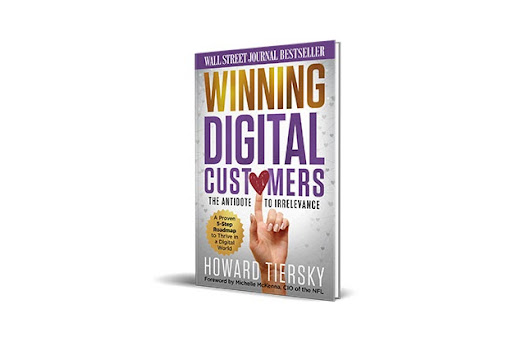Insights | By Howard Tiersky
Identifying “Moments of Truth” in Your Customer Journey
Just as a detailed blueprint is essential for constructing a beautiful building, defining a clear vision of your customer journey is a critical step in delivering a great customer experience.

Your customer journey is the story of the series of interactions your customer has with your various touchpoints in their ongoing relationship with your brand. Each time your customer uses your product checks your site, views your social post, or does anything else to connect with your brand, these are the moments that make up the customer journey.
But what are the moments of truth? These are the critical interactions where the customer is a lot more receptive to reevaluating their relationship with your brand, for better or for worse. Multiple research studies confirm this idea that not all moments have the same importance to the relationship. When you handle these moments well and delight your customer, it goes a long way toward compensating for any other moments in the journey that are not yet totally optimized.
Using the filter of “moments of truth” allows you to identify those that have a disproportionately large impact on the customer’s long-term mindset about your brand. Then, you can invest more time, creativity, and money in those moments.
Here are three indicators that a moment in the customer journey may be a key “moment of truth.”
A MAJOR TURNING POINT IN THE RELATIONSHIP
When a customer first walks into a BMW dealership after looking at magazine ads for years, or when a couple first arrives at the Caribbean resort they’ve spent months researching and hours traveling to, these are moments when the customer’s eyes are wide open to evaluate the relationship afresh and determine whether the brand is a good fit.

Will Rogers said, “You never get a second chance to make a good first impression.” Apple realized years ago that the moment of “unboxing” a new toy was a key moment of truth and put extensive focus on the details of the packaging experience. Today thousands of customers upload “unboxing videos” showcasing their personal experience opening a new iPhone’s packaging for the first time.
One of the reasons these moments are important emotionally is that they often reflect a certain risk the customer has taken—a leap of faith that they are doing the right thing in ordering that iPhone or booking that resort. So not only is your brand “on the line” to deliver on expectations, but the customer is evaluating themselves to determine if they made the right choice.
They will end up either patting themselves on the back for having made a great decision or beating themselves up for having been “duped.” This aspect of self-judgment creates an emotional component that further amplifies these points in the journey to “moments of truth.”
A CRISIS
When your customer is in trouble, the way you respond is critical. Crises are heightened moments that have a disproportionate impact on the long-term relationship.

In a study that our team at FROM ran on insurance customers, the most remembered moments with the most significant impact on the long-term relationship were almost all during crisis incidents—when the customer’s car is totaled or their house is flooded. I recall one customer we spoke with as part of a research study was a fiercely loyal Allstate customer because of a claim experience her parents had 30 years earlier when the customer was a small child.
Not surprisingly, some of the crises that have the greatest impact on the relationship are those that the customer perceives are caused by brands. Canceled flights, data loss from crashed hardware, or salmonella in their sandwich have the potential to be disastrous “moments of truth.”
But curiously, these “screw-ups” also have the potential to become some of the most positive moments in the customer journey, if they’re handled artfully. This usually involves a sincere apology, fixing the problem, and often a gesture of compensation. Academics term this the “service recovery paradox,” and it’s why Ritz Carlton empowers their hotel workers to use their judgment and spend up to $2,000 to solve a customer problem without manager approval.
UNEXPECTED DELIGHT
One last category of “moments of truth” are opportunities to create surprising delight. This means delivering something of value that is unexpected and reflects insight into the customer’s needs.


I once experienced a moment of surprising delight when I was flying out of Newark Airport on United Airlines and sat down to have dinner before my flight at one of the nicer full-service restaurants in the airport. The restaurant had an iPad at every seat and encouraged you to scan your boarding pass so that they could keep you updated regarding your flight departure time.
I scanned my ticket, and in addition to the flight notices, I received a message from United Airlines letting me know that they would be “picking up the check” for my dinner to thank me for my loyal patronage. Triggered by this digital interaction, the waiter then brought over a printed card to this same effect.
Although I was dining in the United Airlines terminal, this restaurant was a seemingly independent steakhouse, not a United Airlines branded club. Such recognition and willingness to seek me out and buy my dinner even when dining at what at least appears to be an independent establishment was an especially unexpected and appreciated surprise.
While I do love getting first-class upgrades and free “frequent flyer” flights from United, frankly, I have come to expect these as “part of the deal,” so, while perhaps more valuable, they don’t necessarily rise to the same level of unexpected delight as this gesture did.
As you review all the innovations and improvements you want to apply to your customer journey, identifying which interactions are significant moments of truth can be helpful criteria to prioritizing where you will get the biggest impact for your investment.
Looking to optimize the key moments of truth in your customer journey? We can help. Book a meeting with our team today
My Wall Street Journal bestselling book, Winning Digital Customers: The Antidote to Irrelevance, contains a blueprint for developing a successful strategy for your company as well as practices to aid in identifying new trends and opportunities to explore. You can download the first chapter for free here or purchase the book here.





